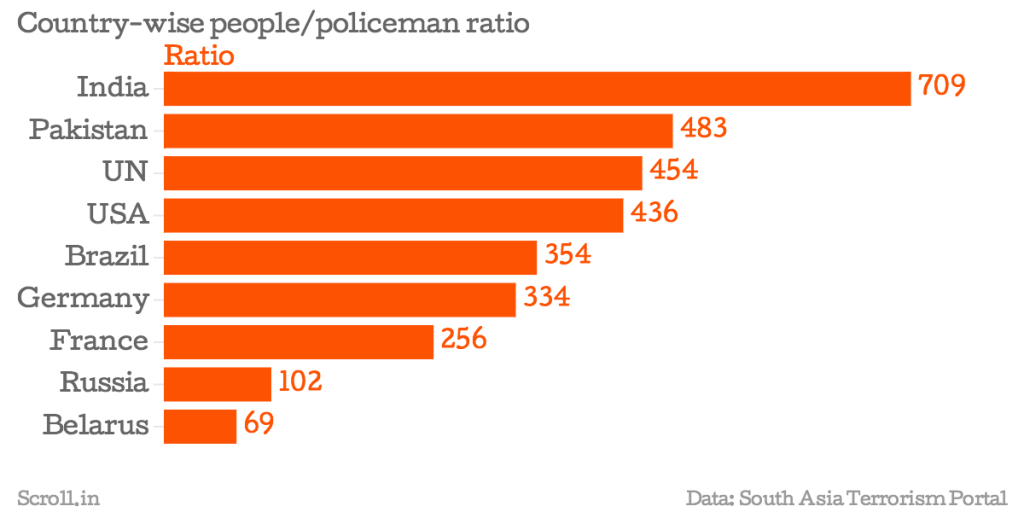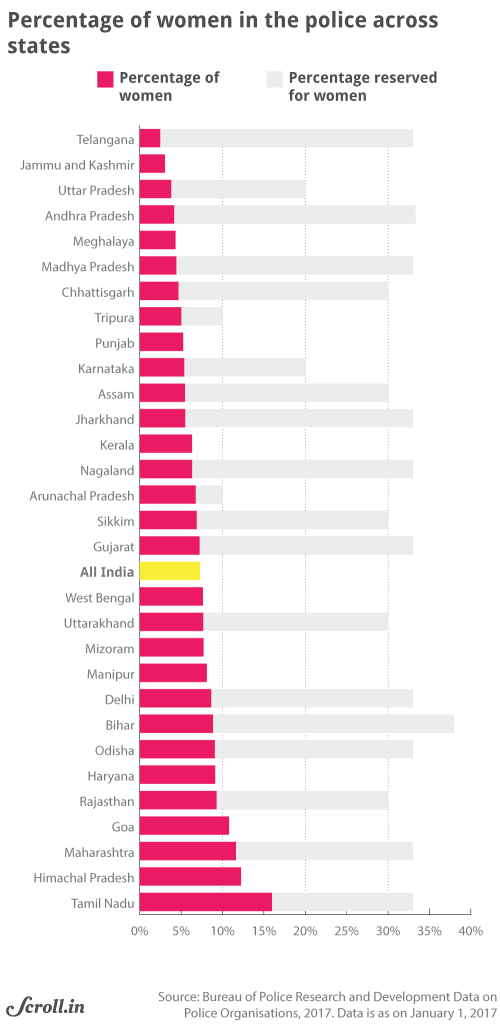Contents
- Poor conditions of protectors: Police Commemoration Day
- Punjab farmers are creating bio-enzymes from kinnow
Poor conditions of protectors: Police Commemoration Day
Context:
Since the outbreak of COVID-19, police officers with healthcare officials have been on the frontline in all the states and they have laid their lives in service. In memory of these and other colleagues killed, all the police forces of the State and Centre observe October 21 as Police Commemoration Day.
Relevance:
GS-I: Indian Society (Population and its associated issues, Salient features of Indian Society, Diversity of India), GS-II: Governance (Government Initiatives and Policies)
Dimensions of the Article:
- Police Commemoration Day 2021
- About India’s Police system
- Issues faced by the Police
- Way Forward
Police Commemoration Day 2021
- The Police Commemoration Day 2021 was observed on October 21 to honour police officials who have made the supreme sacrifice in the line of duty.
- On October 21, 1959, ten brave Policemen were killed by the Chinese Army at Hot Springs in Ladakh in an unequal confrontation inside Indian territory. Therefore, to honour the memory of these 10 valiant Policemen, the DGsP/IGsP Conference that was held in 1962 decided to observe October 21 as Police Commemoration Day every year in the country.
- The Police Commemoration Day Parade is being held at the National Level at the Police Memorial in Chanakyapuri, Delhi since 2012.
- India’s first national police museum was inaugurated by PM Narendra Modi in Delhi on October 15, 2018. The national police museum represents and depicts the history, uniform, and gear of central and state police forces in India.
About India’s Police system
- The Police System is a colonial legacy. The first Police commission was set up in 1857 soon after the mutiny. First Indian Police Act was enacted in 1861
- Post – independence, we are still governed majorly by Indian Police Act (IPA) of 1861 which was drafted as a direct consequence of the Revolt of 1857.
- Sir A H L Curzon commission was established in 1902-03 for Police Reforms and to look into issues arising because of Indian police Act 1861. It recommended the appointment of local people at officer level in the police system.
- National Police Committee, 1978 was the first commission at the national level after independence. It had a broad term of reference covering the police organization, its role, functionality, accountability, relations with the public etc. It produced eight reports including Model Police Act, between 1979-81. But the majority of recommendations of NCP have remain unimplemented.
Issues faced by the Police
An overburdened force
- The number of police to the population at large in India is one of the lowest in the world. According to a report issued by Common Cause in 2019, the Indian police force is at only 77% of its sanctioned strength.
- Police personnel work impossibly long hours, averaging 14 hours per day. In Punjab and Odisha, they average 17 and 18 hours per day, respectively. And only Maharashtra gave most police personnel one day a week off. Half of all personnel get no days off at all.
- Compared to most other countries, police in India get paid low salaries, have a poor quality of life and are often deprived of basic facilities.



Lack of training
- The report showed that more than 10% police personnel never receive human rights training. Even among the personnel who received training in human rights, a majority said it was only at the time of joining the police force.
- Low ratio of women in the police forces – the lack of diversity of personnel can mean that it is not sensitive in dealing with disadvantaged and minority communities as well as women.
- Crime investigation requires skills, training, time, resources, and adequate forensic capabilities. However, the Law Commission and the Second Administrative Reforms Commission have noted that state police officers often neglect this responsibility because they are understaffed and overburdened with various kinds of tasks. As a result – the poor quality of investigation leads to lower conviction rates.
Lack of infrastructure
- One report in 2020 shows that 70 police stations do not have wireless devices, 214 stations have no telephones, and 24 stations have neither wireless nor telephones.
- The advancement in technology which has opened new dimensions of crime (esp. Cybercrime) cannot be tackled by the current system.
Declining Police-Public relations
- The basic architecture of policing is still colonial in India which is a repressive force. An independent country needs a police system that is service oriented that instils faith among its citizen.
- The police – public relation in India lies under the shadow of distrust. People view police as corrupt, inefficient, politically partisan and unresponsive.
Operational Freedom – Politicization
- Politicization of Police system due to the interference of political leaders and party workers has led to loss of its autonomy and degraded its respect among citizen.
Way Forward
- The police – people ratio need to be improved particularly in metro cities and state capitals where police personnel is overburdened. One way could be to increase the number of personnel in these cities by levying an extra security tax which can be used to provide quality policing in the city and better life to police personals.
- To improve the quality of investigation, every state should have a specialized investigation unit within the police force which must not be diverted for any other purposes.
- To improve police – public relation, community policing can be an important step. In community policing, police work with the local people in the community for prevention and detection of crimes, maintenance of public order and resolution of local conflict.
- To instil faith among citizen and to overcome police misconduct, an independent complaint authority is the demand of the time.
- Policing infrastructure in India is archaic in most of the towns in India. The system needs continuous budgetary support to overhaul the policing infrastructure in the country. A modern patroling system, modern equipment, communication system, forensic labs are the need of the hour.
- Article 252 can be relied upon to have a single police law if two or more states consent and taking it a step further – Police and Public order can be shifted from state list to concurrent list of VII Schedule to have a centralised, uniform and coordinated approach to tackle transnational organized crime, regulate rising cases of money laundering, drug/arms/human trafficking etc.
-Source: The Hindu
Punjab farmers are creating bio-enzymes from kinnow
Context:
The kinnow fruit season has started in Punjab with farmers readying themselves to reap the harvest of the citrous fruit that registers huge demand in the neighbouring states. Along with the harvest of the kinnow fruit, farmers also have to dispose of the falling fruit which is considered a total waste and a byproduct of the harvest. However, the falling fruit is not a total waste and the fallen fruit can be collected from the kinnow fields by the farmers and utilised in making bio-enzymes (BEs) out of it.
Relevance:
GS-III: Agriculture, GS-III: Science and technology
Dimensions of the Article:
- What is Kinnow?
- What are bio-enzymes?
- Benefits of Bio enzyme cleansers
- Advantages of using fallen Kinnow to make Bio Enzymes
What is Kinnow?
- Kinnow is a high yield mandarin hybrid Orange variety cultivated extensively in the wider Punjab region of India and Pakistan.
- ‘Kinnow’ trees are highly productive; it is not uncommon to find 1,000 fruits per tree.
- The fruit matures in January or February. It peels easily and has a high juice content.
- Most of the target export markets of Indian and Pakistani ‘Kinnow’ are those of developing countries. Only 2.6 percent of Kinnow exports target the markets of developed countries, which is due to the emerging demand for seedless Kinnow by the developed countries.
What are bio-enzymes?
- Bio-enzymes are organic solutions produced through fermentation of organic waste including various fruits, vegetable peels and flowers, by mixing in sugar, jaggery/molasses and water.
- The organic solution comprises good bacteria which produces enzymes to digest wastes, stains, soils and malodors. During the process of fermentation, the bacteria attacks the stains to break down the molecules into smaller particles so that it becomes food for the bacteria and finally gets converted into carbon dioxide and water.
- Bio enzyme cleaners comprise different types of enzymes:
- Proteases: Effective in breaking down protein based molecules like blood and food.
- Lipases: Break down fat and grease.
- Amylases: Break down all the starch molecules.
- Cellulases: Soften the fabric and restore colour to its fibres
Benefits of Bio enzyme cleansers
- Bio-enzymatic cleaners encourage sustainable living and are safe for the environment.
- The micro-organisms can penetrate small crevices and cracks to eliminate stains which conventional chemical cleaners cannot.
- They are affordable in comparison to the toxic chemical cleaners that are available in the market.
- They encourage a zero waste lifestyle as it is a sustainable way to clean the home.
- The cleaners do not pollute the lakes and underground water.
Advantages of using fallen Kinnow to make Bio Enzymes
- Effect of citrus BEs on crop disease showed good results against bacterial diseases like black rot, bacterial canker on crops like cabbage broccoli, cauliflower, kale, turnip, tomato, radish and oilseeds etc. and showed good results on fungal diseases like collar rot, root rot, damping off and wire stem on the crops like rice, cereals, potato, tomato, sugar beet, cabbage, soya bean, cucumber etc. and it worked moderately on cotton, melon, onion, Banana, soyabean against wilt, crown rot like fungal diseases.
- BEs have a lot of good microbes and one of the major methods which helps overall improvement of our ecology and helps in mitigating the imbalance, which has occurred due to overuse of chemicals, in our soil, air and water.
- In a state like Punjab where water table is depleting fast and water contamination is also major issue, BEs can bring the soil back to life which helps in better water recharging and also stop the contamination of water by improving the health of soil.
-Source: Indian Express



